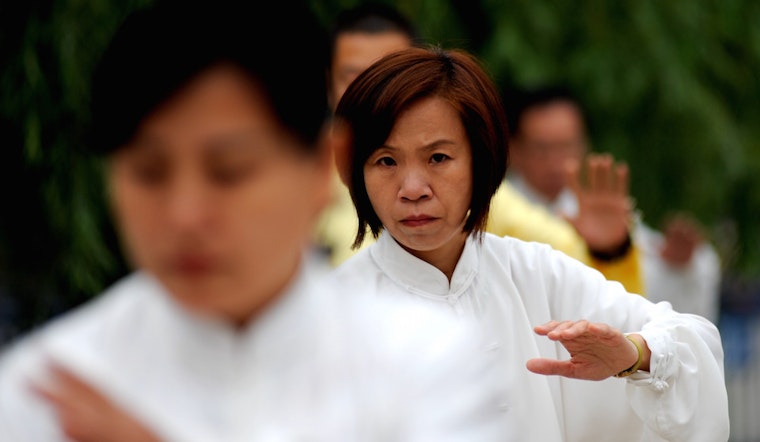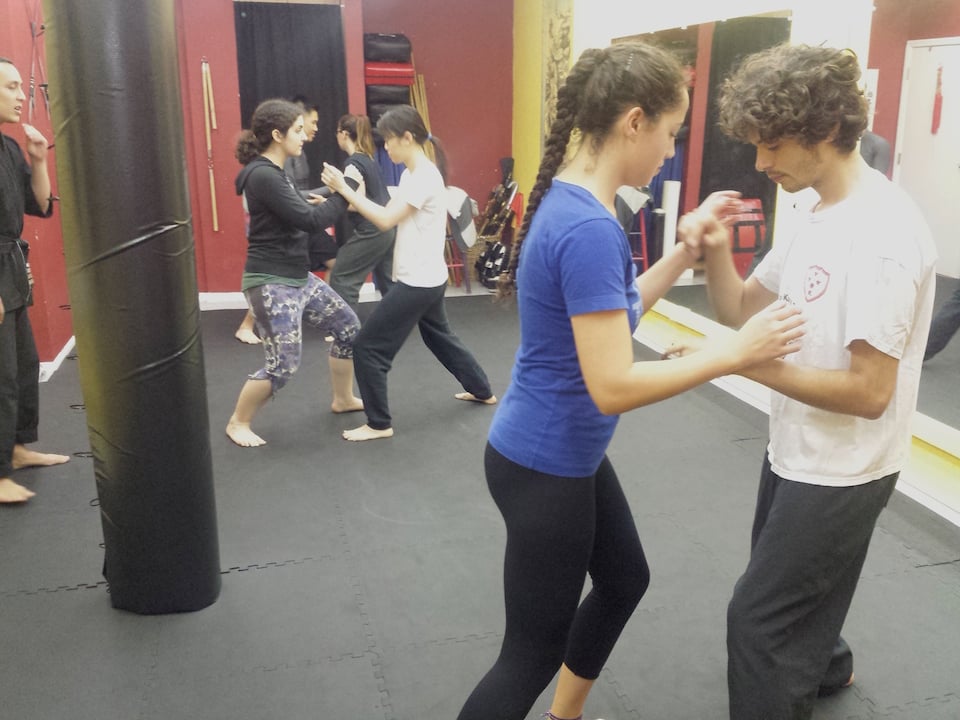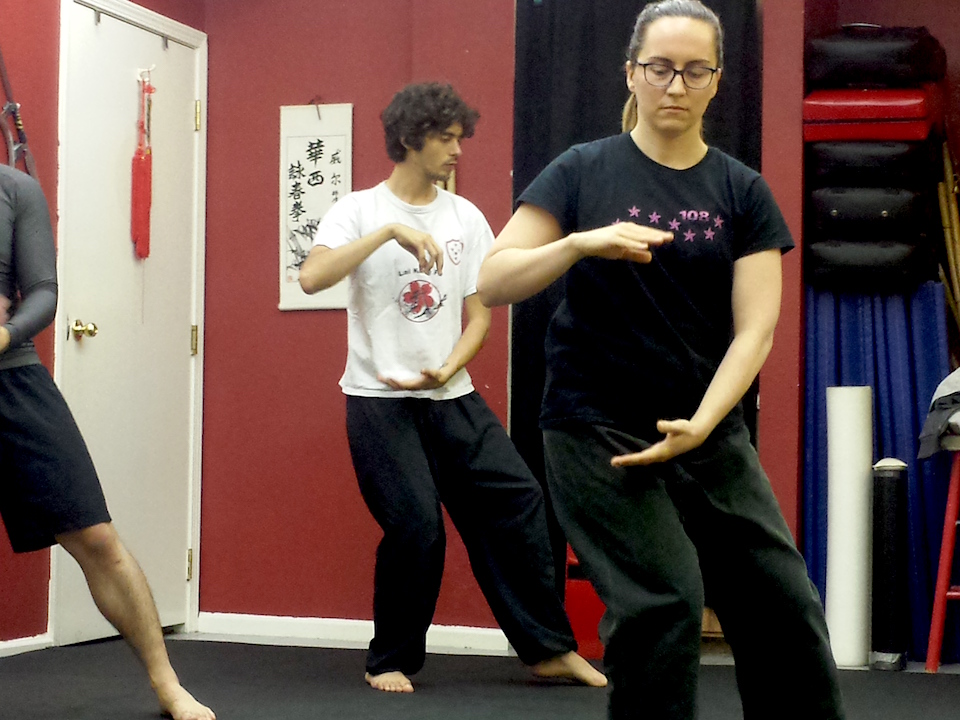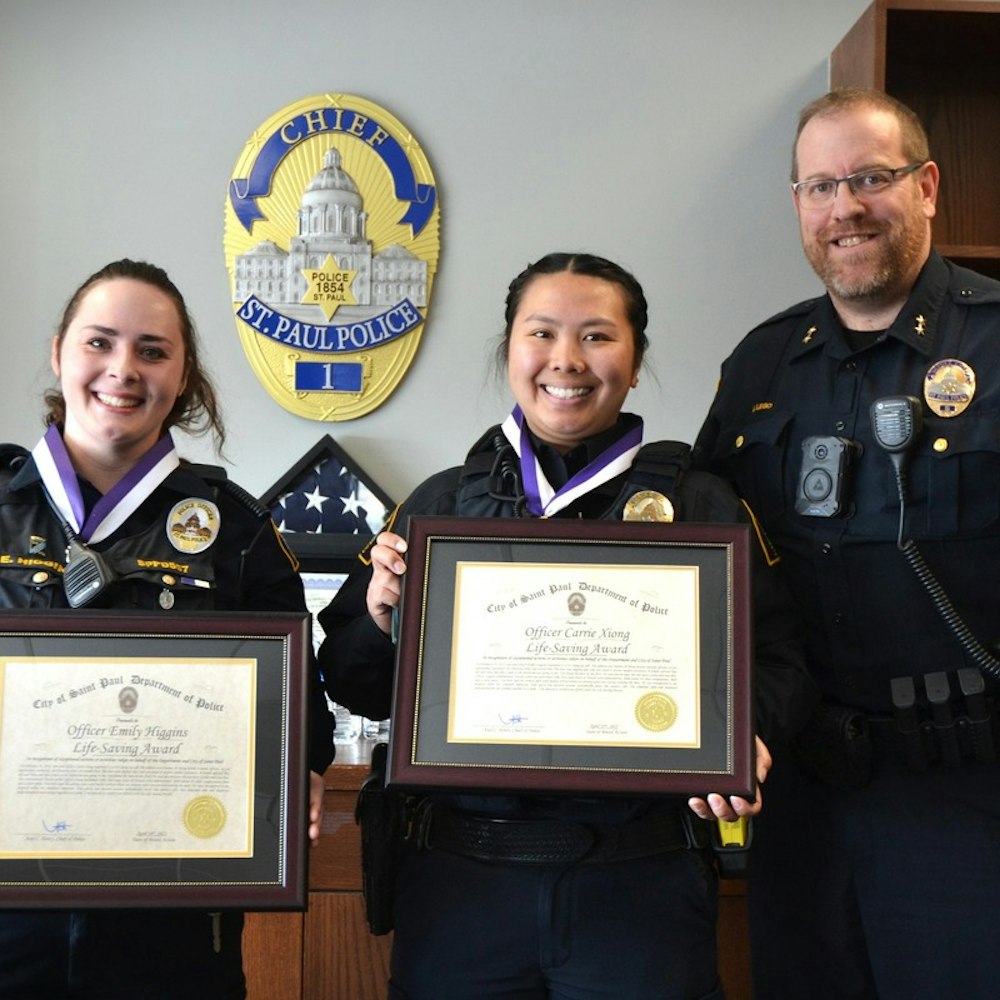
Visit Chinatown in the early morning, and you’ll may come across Chinese elders stepping through the graceful and deliberate movements of tai chi in Portsmouth Square or Washington Square Park. But despite its reputation as a popular activity for the elderly, this Chinese martial art is enjoyed by both young and old folks alike.
Originating in traditional Taoist and Confucian philosophies, the internal martial art of tai chi today includes five schools based on variations of a parent style founded in Chen Village in China's Henan Province in the 17th century.

Fiona Lee / Hoodline
Tai chi first made its way to San Francisco in 1949 with the arrival of Master Choy Kamman, himself the son of the first teacher of tai chi in the United States. Master Choy began teaching in Chinatown and founded what was likely the first tai chi studio in San Francisco. (Watch a video of Master Choy in the 1970s leading a class in the courtyard of the Chinatown YMCA.)
Today, students interested in martial arts have a wide range of resources available in Chinatown. They can take classes at Master Choy’s former haunts of the Chinatown YMCA, with the Chinese Cultural Center, or at martial arts studios like 108 Heroes located in a building that also houses a temple. And both Portsmouth Square and nearby Washington Square Park offer informal classes for the early bird.

Fiona Lee / Hoodline
“People who are only interested in health, I teach them the first form. People who are interested in the martial arts aspect, I teach the second form, which is a little harder,” explains tai chi teacher Debbie Au of the Chinese Cultural Center, who has been teaching for almost 20 years. She teaches students across a range of ages, with both seniors over 65 and younger students, who can be 20 to 50 years old.
Because tai chi is considered an internal martial art that emphasizes the movement and control of internal energies, it is often taught alongside kung fu, a martial art that involves the movement of external energies.
“As far as practice goes, the difference between tai chi and kung fu is literally internal, so that tai chi as we present it is experiencing it in your own body,” explains Brent Ramos, the founder of 108 Heroes, a studio whose name comes from the classical Chinese novel Outlaws of the Marsh. “[The internal arts] are precision engineered to get you to experience something within yourself.”
“In the same way... you can feel a drop of rain on your skin and you know what that feels like, you feel something when you practice tai chi,” says Barbara Jwanouskos, 108 Studios’ tai chi teacher. She herself began a student who made her way to the studio through a Groupon coupon. A few years later, she teaches the classes. “To have that, you have to be very diligent about practicing it and consistently.”

Fiona Lee / Hoodline
Students are attracted to tai chi for a variety of reasons. One student at 108 Heroes mentioned stress management, while elders may practice it for balance and weight balancing. A recent article in the Wall Street Journal highlighted how tai chi could help elders prevent falls.
Others come to work through their fears. “I wanted to learn self-defense. I wanted to face that fear and protect myself,” says Lori Panetta, who has been studying both tai chi and kung fu at 108 Heroes for four months. “It helped me see that fighting isn’t really what you want to do, it’s something that can sometimes be necessary. That was a huge realization for me and it brought some peace to me.”
No matter how tai chi draws the student in, all of the teachers emphasize that tai chi isn’t a casual undertaking, and requires considerable practice and consistency to master. “It’s not just as simple as doing it in a park and following a person,” says Au. “You really need to spend time practicing it on your own.”
Jwanouskos agrees. “You have to be a lifer, and in it for the long game.”









